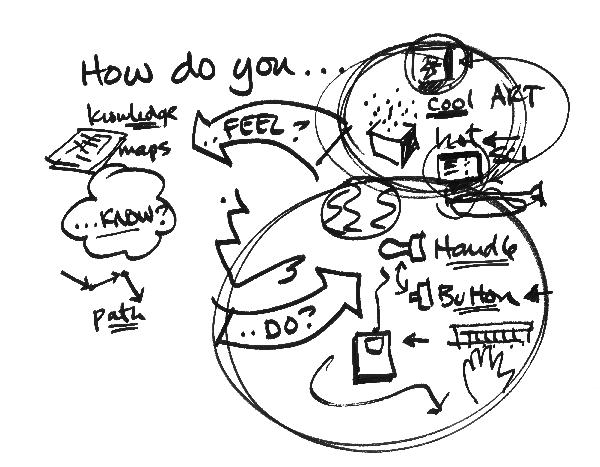

Interaction design is design for human use. It involves answering three questions:

One of the important choices for
"How do you do" is between
HANDLES and BUTTONS.
Handles are better for continuous control
(e.g. trombone slide,
steering wheel)
Buttons are better for discrete control
(e.g. piano
keyboard, ignition key)
Handles leave you in control
(e.g. volume control on TV).
Buttons are more likely to trigger something automatic
(e.g. opening an elevator door).
One choice for "How do you feel?" is McLuhan's "hot" vs "cool".
Hot media like print are more authoritative and exact.
Cool media like cartoons and television are fuzzy and incomplete they invite more participation.
Paths are good for beginners; "just tell me step by step what to do."
Maps are good for understanding alternatives, they take longer to learn but are more robust.
Paths are good for training expert skill; they can be very efficient.

Which do you prefer?
Which is better for the vendor?
Which is faster?
What are the failure and recovery possibilities?
Such powerful metaphors are called "paradigms".
They motivate the central questions asked.
They help us understand the STYLE of interaction.
Understanding competing paradigms helps us understand what
various people consider a "good" interaction design.

